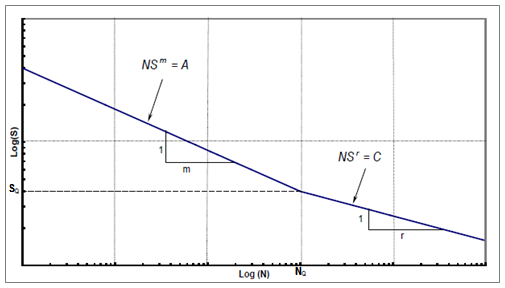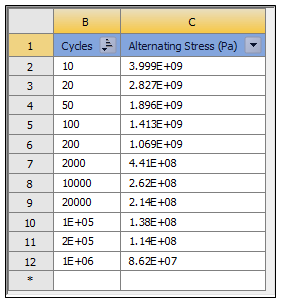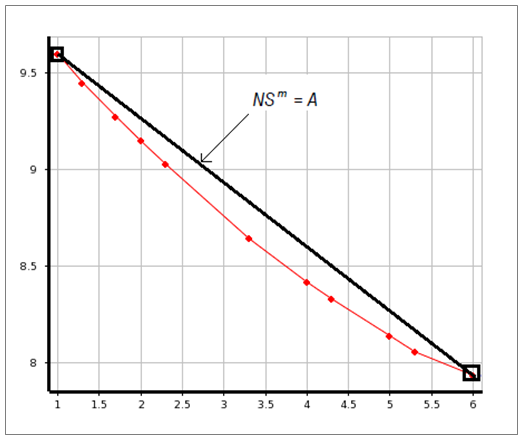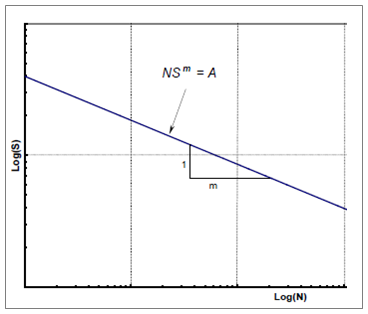All Frequency-Based Fatigue formulations are driven by the material’s relationship between Stress (S) and number of life cycles (N). This S-N relation can be defined in the Engineering Data Workspace using any of the following:
Important:
For Frequency-Based Fatigue calculations, you need to employ at least one of the SN Curve formulations listed above in order to proceed with a solution.
For both the Linear S-N Curve and the Bi-linear S-N Curve, the reference units for the parameters is [Pa]. No other unit or unit system is currently supported.
In the various S-N Curve formulas covered here, the "S" value always refers to Stress Amplitude.
As long as you define material properties using one of the above formulas, you can perform Frequency-Based Fatigue calculations.
- Bi-Linear S-N Curve Formula
This is a two segment S-N Curve formula of the form:
&

Where:
A = First Fatigue Strength Coefficient m = First Fatigue Strength Exponent C = Second Fatigue Strength Coefficient r = Second Fatigue Strength Exponent SQ = Stress Amplitude at Transition Point (in Pa) NQ = Number of cycles at Transition Point Using the Derive from property in Engineering Data Workspace, select one of two methods of definition:
: Users define A, m, C, and r.
: define m, r, NQ, and SQ.
All other properties are automatically calculated.
Note: The "m" and "r" values are the inverse negative slopes of the Bilinear S-N Curve.
- S-N Curve Table
As illustrated below the default data for the S-N Curve is contained in the Engineering Data Workspace tabular data of corresponding Alternating Stresses and Cycles of life.

Note: If only the SN table is provided (and not the Linear/Bilinear parameters themselves),
then the solver will use the first and last points of the table to perform a linear
interpolation using equation and arrive at the required parameters of A and m. Once the A and m
values are obtained, we can proceed with the solution normally. If either of the
parameters (Linear/Bilinear) are provided directly through the material definition, they
will be used directly. (The table, if present, will be ignored in this case).




